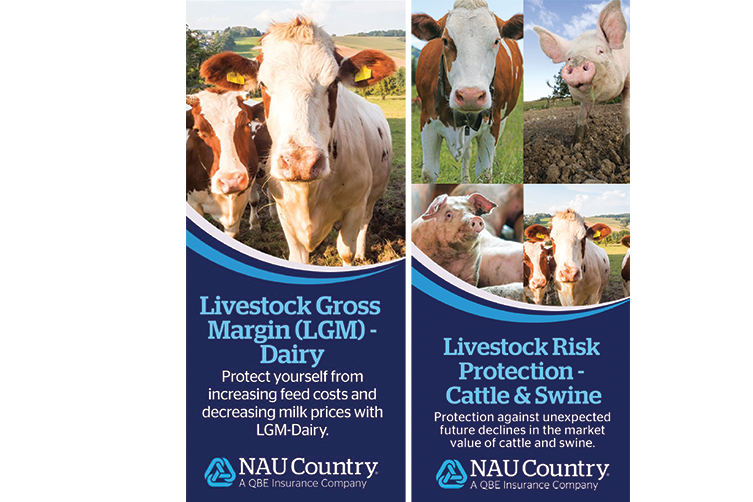Navigating Business Risks with Bagley Risk Management
Understanding Animals Risk Defense (LRP) Insurance: A Comprehensive Overview
Navigating the realm of livestock danger protection (LRP) insurance can be an intricate endeavor for numerous in the farming industry. From exactly how LRP insurance functions to the various insurance coverage alternatives readily available, there is much to uncover in this thorough guide that could possibly shape the means animals producers approach danger monitoring in their businesses.

How LRP Insurance Works
Periodically, recognizing the auto mechanics of Animals Threat Protection (LRP) insurance can be complex, however damaging down exactly how it functions can provide clarity for farmers and ranchers. LRP insurance policy is a danger administration device created to shield animals manufacturers versus unforeseen cost declines. It's crucial to keep in mind that LRP insurance policy is not a revenue assurance; rather, it focuses only on price danger protection.
Qualification and Protection Options

When it comes to protection choices, LRP insurance coverage uses producers the flexibility to choose the insurance coverage degree, protection period, and endorsements that best suit their risk management demands. By recognizing the qualification requirements and coverage alternatives offered, livestock producers can make enlightened decisions to manage threat effectively.
Benefits And Drawbacks of LRP Insurance Policy
When reviewing Animals Danger Protection (LRP) insurance, it is necessary for animals producers to consider the disadvantages and advantages inherent in this threat monitoring tool.

One of the primary benefits of LRP insurance coverage is its ability to supply security against a decrease in animals rates. Additionally, LRP insurance provides a degree of versatility, allowing producers to customize protection levels and plan periods to fit their specific requirements.
Nevertheless, there are additionally some drawbacks to think about. One restriction of LRP insurance is that it does not protect versus all kinds of risks, such as condition break outs or all-natural calamities. Costs can in some cases be expensive, especially for producers with big animals herds. It is critical for manufacturers to meticulously analyze their individual danger direct exposure and economic scenario to determine if LRP insurance policy is the right threat administration device for their operation.
Comprehending LRP Insurance Premiums

Tips for Making Best Use Of LRP Advantages
Making best read here use of the benefits of Livestock Danger Security (LRP) insurance policy calls for tactical preparation and aggressive threat management - Bagley Risk Management. To make the many of your LRP insurance coverage, consider the following ideas:
Routinely Assess Market Problems: Keep informed concerning market patterns and price variations in the animals industry. By keeping an eye on these elements, you can make informed choices regarding when to acquire LRP protection to safeguard against possible losses.
Establish Realistic Insurance Coverage Degrees: Homepage When choosing coverage degrees, consider your production costs, market worth of animals, and prospective risks - Bagley Risk Management. Establishing reasonable protection levels guarantees that you are sufficiently safeguarded without paying too much for unneeded insurance
Expand Your Insurance Coverage: As opposed to counting solely on LRP insurance, think about diversifying your danger management strategies. Integrating LRP with other threat administration tools such as futures agreements or alternatives can provide thorough protection versus market uncertainties.
Evaluation and Change Protection Consistently: As market conditions change, occasionally review your LRP insurance coverage to ensure it straightens with your present threat direct exposure. Adjusting insurance coverage degrees and timing of acquisitions can aid optimize your threat security approach. By complying with these tips, you can take full advantage of the benefits of LRP insurance coverage and secure your livestock operation against unpredicted risks.
Verdict
In final thought, animals danger protection (LRP) insurance coverage is a beneficial device for farmers to take care of the monetary threats associated with their animals procedures. By comprehending exactly how LRP functions, qualification and protection choices, along with the benefits and drawbacks of this insurance coverage, farmers can make educated choices to secure their livelihoods. By very carefully taking into consideration LRP premiums and applying approaches to take full advantage anonymous of advantages, farmers can mitigate possible losses and make certain the sustainability of their procedures.
Livestock producers interested in getting Livestock Danger Protection (LRP) insurance can explore a variety of qualification criteria and coverage choices customized to their specific animals procedures.When it comes to insurance coverage choices, LRP insurance policy uses producers the flexibility to select the insurance coverage degree, protection duration, and recommendations that ideal match their danger management requirements.To understand the ins and outs of Livestock Danger Defense (LRP) insurance policy completely, understanding the factors influencing LRP insurance premiums is important. LRP insurance coverage premiums are figured out by various components, including the insurance coverage degree selected, the anticipated rate of animals at the end of the coverage duration, the type of livestock being guaranteed, and the size of the protection period.Evaluation and Adjust Coverage Regularly: As market problems transform, occasionally review your LRP coverage to guarantee it lines up with your existing threat exposure.